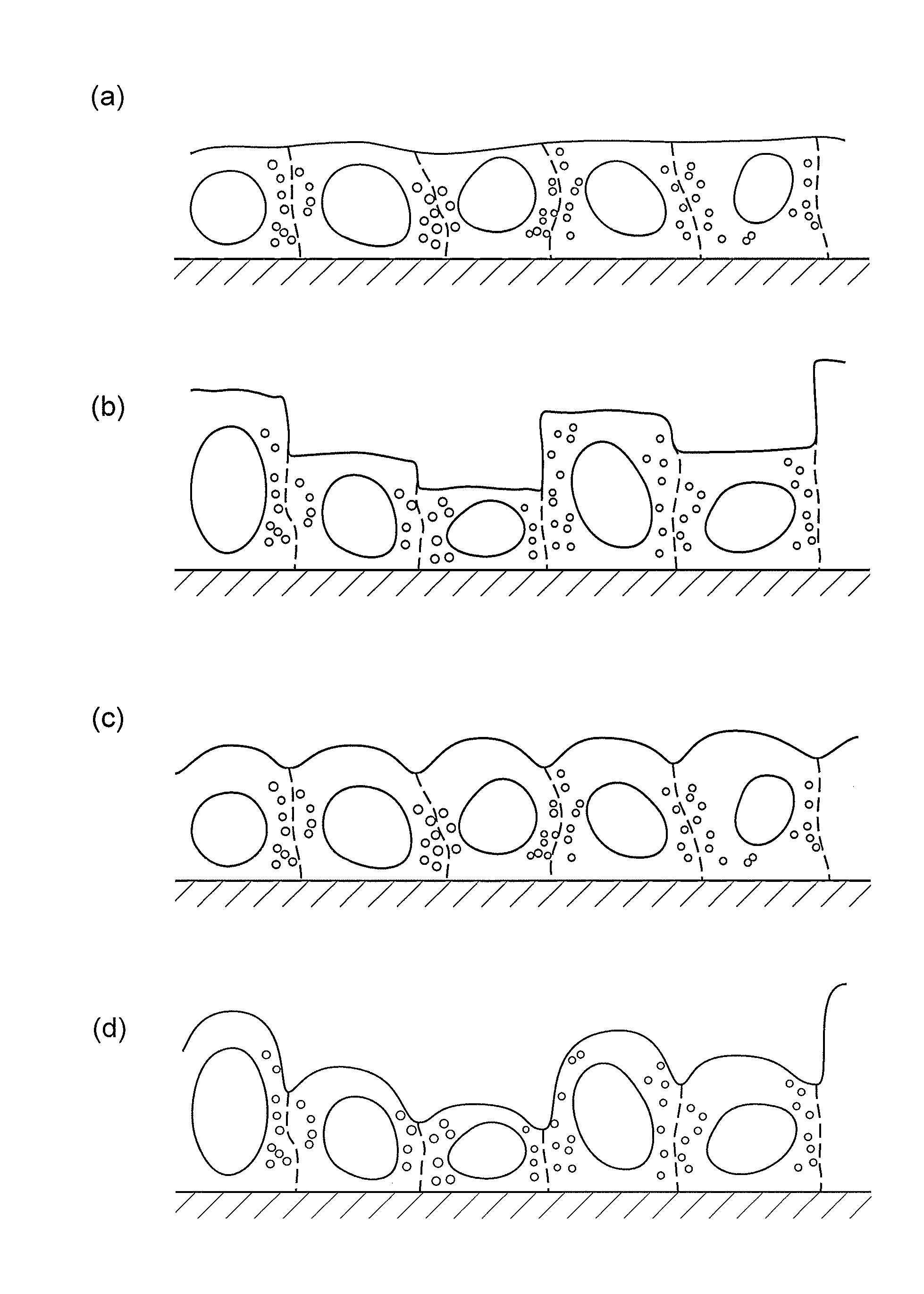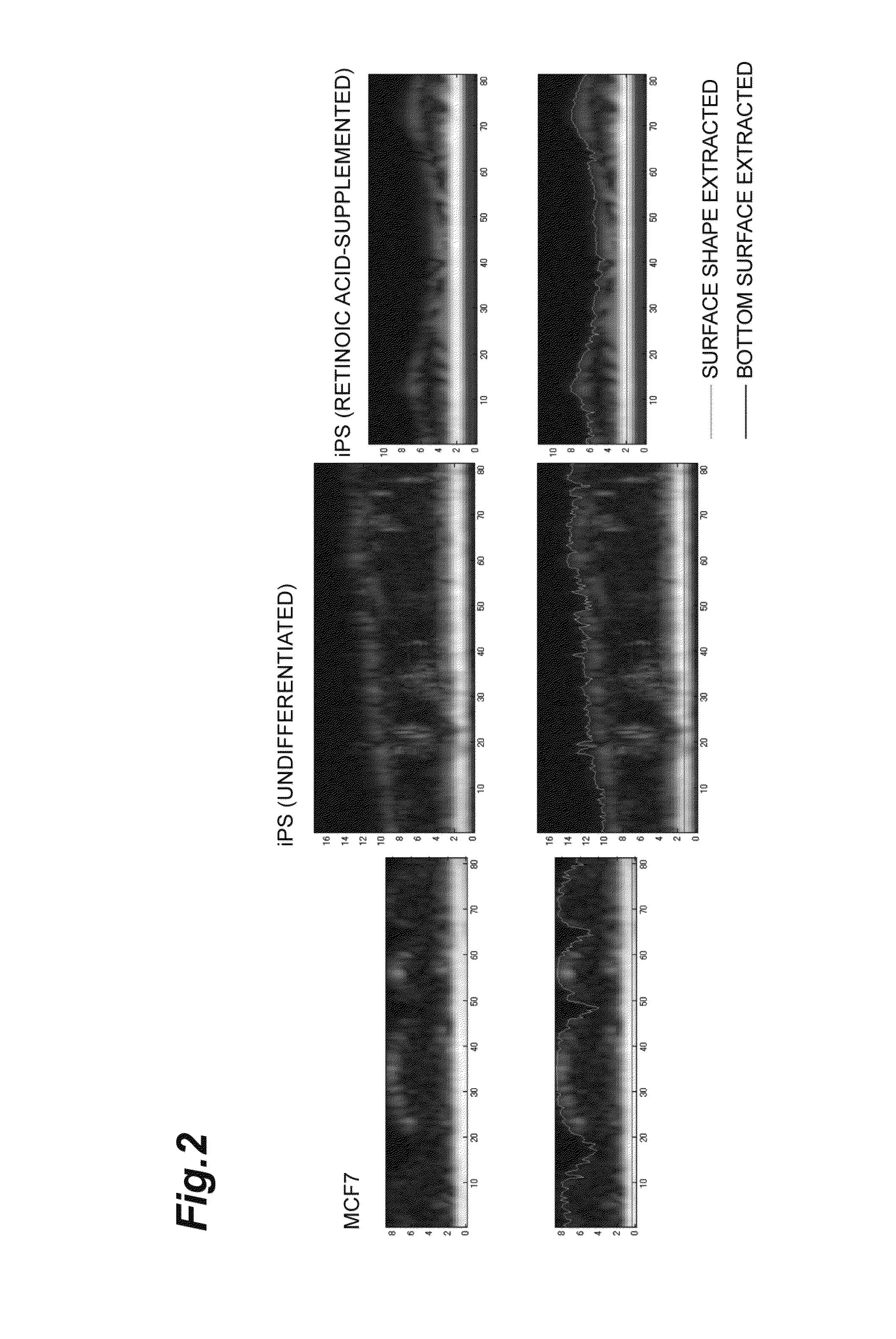Method for determining differentiation level of pluripotent stem cells
a technology differentiation levels, which is applied in the field of determining the differentiation level of pluripotent stem cells, can solve the problems of unsuitability for regenerative medicine or the like, loss of pluripotency, and inability to subculture pluripotent stem cells, so as to increase the number of samples and determine the flatness more easily and effectively. , the effect of increasing the number of samples
- Summary
- Abstract
- Description
- Claims
- Application Information
AI Technical Summary
Benefits of technology
Problems solved by technology
Method used
Image
Examples
example 1
[0072]Onto an antireflectively coated glass bottom dish with 35 mm diameter, a 253G1 iPS cell line derived from a human adult fibroblast was seeded at 10 to 20 colonies / dish and cultured on feeder using a Primate ES Medium (manufactured by ReproCELL Incorporated, a commercial name: RCHEMD001) containing 4 ng / mL human basic FGF in the final concentration. The size of one colony was around 200 μn. As the feeder cells, mouse lung fibroblasts were used. The cells were cultured until the third day after the seeding. The medium was replaced once a day.
[0073]A sample of the iPS cells for differentiation, the medium of which was replaced with a Primate ES Medium containing 4 ng / mL human basic FGF and 12.5 μM retinoic acid in the final concentration on the second day after the seeding, was cultured for another 4 days. Retinoic acid is generally used as a reagent for inducing differentiation. In addition, for a control of differentiated cells, MCF7 cells were used which were human breast canc...
example 2
[0077]As to 3 colonies of the undifferentiated iPS cells and 3 colonies of the iPS cells cultured by supplementing retinoic acid, 7 to 15 visual fields around the center of each colony were analyzed. Each visual field was partitioned into six ROIs, and the bottom surfaces and surface shapes of the cells were extracted for each ROI unit to measure the height of the surface of the cells under the same condition as that of Example 1. The size of the ROI was 23 μM×23 μm. The flatness was calculated as a standard deviation of height of the surface of the cells which was standardized with a mean value of height of the surface of the cells, and a statistical processing was done to perform Student's t-test. The result was shown in Table 2 and FIG. 4. The flatness of the iPS cells cultured by supplementing retinoic acid was higher than the flatness of the undifferentiated iPS cells, in which the difference was significant.
TABLE 2UndifferentiatedRetinoic acid-addediPS cellsiPS cellsCont-1Cont...
example 3
[0078]Under the same condition as that of Example 2, three-dimensional data for the undifferentiated iPS cells and the iPS cells cultured by supplementing retinoic acid were obtained every 0.125 μm in the horizontal direction and every 0.32 μm in the vertical direction, and from the obtained data, tomogram images were created. From the created tomogram images, the bottom surfaces and surface shapes of the cells were extracted and a variogram analysis was performed. Specifically, a value of MSHD when the Δr was within a range of 0.25 μm to 15 μm was calculated from formula (I) as described above, and standardized with a mean value of height of the surface of the cells. As shown in FIG. 5, the flatness of the iPS cells cultured by supplementing retinoic acid was higher than the flatness of the undifferentiated iPS cells.
[0079]Next, a value of MSHD when the Δr was 15 μl was calculated and standardized with a mean value of height of the surface of the cells to calculate the flatness. Th...
PUM
| Property | Measurement | Unit |
|---|---|---|
| height | aaaaa | aaaaa |
| height | aaaaa | aaaaa |
| flatness | aaaaa | aaaaa |
Abstract
Description
Claims
Application Information
 Login to View More
Login to View More - R&D
- Intellectual Property
- Life Sciences
- Materials
- Tech Scout
- Unparalleled Data Quality
- Higher Quality Content
- 60% Fewer Hallucinations
Browse by: Latest US Patents, China's latest patents, Technical Efficacy Thesaurus, Application Domain, Technology Topic, Popular Technical Reports.
© 2025 PatSnap. All rights reserved.Legal|Privacy policy|Modern Slavery Act Transparency Statement|Sitemap|About US| Contact US: help@patsnap.com



